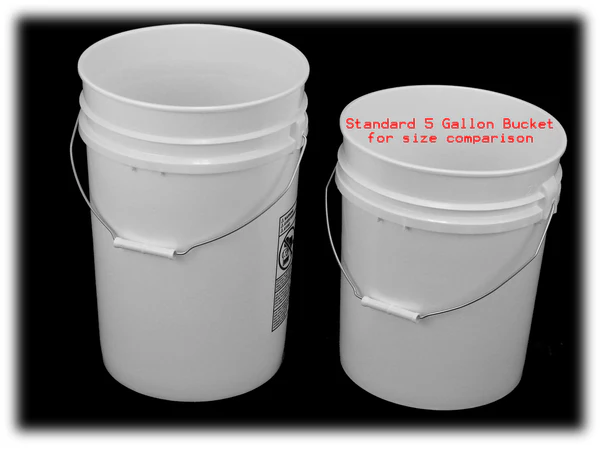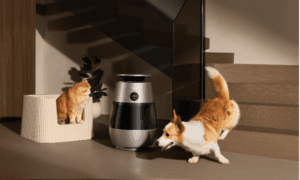Whether youre a contractor, homeowner, or someone who frequently uses buckets for various projects, understanding the exact dimensions of a 5-gallon bucket is more important than you might think. These seemingly simple containers come in different materials and configurations, each with specific measurements that can affect everything from storage space to transportation costs.
Let’s dive into everything you need to know about 5 Gallon bucket dimensions, so you can make informed decisions for your next project or purchase.
Why Bucket Dimensions Matter More Than You Think
Before we get into the specifics, you might wonder why exact dimensions are so crucial. Well, if you’ve ever tried to fit buckets into a truck bed, stack them in a storage room, or calculate how many you need for a landscaping project, you’ll quickly realize that even small differences in height, diameter, and wall thickness can make a big difference.
Professional contractors often need to know these measurements for accurate project planning, while DIY enthusiasts benefit from understanding dimensions for storage and transport purposes. Plus, knowing the weight capacity and physical limitations of your buckets can prevent costly mistakes and safety issues.
Standard 5-Gallon Plastic Bucket Dimensions
Plastic buckets are by far the most common type you’ll encounter, and for good reason – they’re lightweight, affordable, and versatile. Here’s what you can expect from a standard plastic 5-gallon bucket:
Height: Most plastic 5-gallon buckets measure between 13 to 15 inches tall. You’ll commonly find buckets that are 14.5 inches, 14⅝ inches, or even up to 15 inches in height. This variation might seem small, but it can affect how many buckets you can stack or fit in a given space.
Diameter: The top diameter typically ranges from 11 to 12 inches, with most buckets measuring around 11.9 to 12 inches across the top opening. What’s interesting is that the bottom diameter is usually slightly smaller – this design feature allows buckets to nest together for efficient storage and shipping.
Wall Thickness: Plastic bucket walls usually measure between 0.070 to 0.100 inches thick. You might see this expressed in “mils” (where 1 mil equals 0.001 inches), so a 90-mil bucket has walls that are 0.090 inches thick. Thicker walls generally mean more durability but also add to the overall weight.
Weight: An empty plastic 5-gallon bucket typically weighs between 1.8 to 3 pounds, with most standard buckets coming in around 2 to 2.2 pounds. This lightweight design is one of the main advantages of plastic buckets.
5-Gallon Steel Bucket Dimensions: Built for Heavy Duty
Steel buckets are the workhorses of the bucket world, designed for industrial applications and harsh environments. Their dimensions reflect their robust construction:
Height: Steel 5-gallon buckets generally range from 13 to 17 inches in height, with many falling around 13.4 to 13.5 inches. The variation in height often depends on the specific gauge of steel used and the manufacturing process.
Diameter: You’ll find steel bucket diameters typically between 10 to 12 inches, with common measurements being 11.25 to 11.81 inches for the outer diameter. Like plastic buckets, steel versions often have slightly smaller bottom diameters to enable stacking.
Wall Thickness: Steel bucket walls are measured by gauge, with common gauges being 24, 26, 28, or 29. In actual thickness, this translates to approximately 0.024 to 0.032 inches. A higher gauge number actually means thinner steel – so a 29-gauge bucket has thinner walls than a 24-gauge bucket.
Weight: Here’s where steel buckets really differ from plastic ones. Empty steel buckets typically weigh between 3 to 10 pounds, depending on the gauge and construction. Some lightweight steel buckets might weigh around 2.4 pounds, while heavy-duty versions can weigh over 5 pounds when empty.
Understanding Open Head vs. Closed Head Designs
Not all 5-gallon buckets are created equal when it comes to access. Understanding the difference between open head and closed head designs can help you choose the right bucket for your specific needs.
Open Head Buckets are what most people picture when they think of a bucket. The entire top is removable, giving you full access to the interior. These are perfect for storing solids, powders, paints, or anything that requires easy filling, scooping, or mixing. The lid is typically a separate piece that snaps on or secures with a lever-lock mechanism.
Closed Head Buckets have a permanently attached top with one or more small openings fitted with screw caps or plugs. These are primarily designed for liquids like chemicals, oils, or solvents where you need secure containment and controlled dispensing. They offer better sealing and reduced evaporation compared to open head designs.
The Weight Factor: What You’re Really Carrying
When people talk about 5 Gallon Bucket Weight, they’re usually interested in the total weight when filled, not just the empty bucket weight. Let’s break this down:
Water is the most common reference point, and it’s heavier than many people realize. Five gallons of water weighs approximately 41.7 pounds (water weighs about 8.34 pounds per gallon at room temperature). Add the weight of a typical plastic bucket (about 2 pounds), and you’re looking at nearly 44 pounds total.
This is important information for anyone planning to carry filled buckets regularly. If you’re thinking about using buckets for water storage or transport, remember that 44 pounds is quite heavy – you might want to consider using multiple smaller containers or invest in a bucket dolly for easier transport.
For other materials, the weight will vary significantly. Sand, for instance, is much heavier than water, while many paints and liquids might be lighter. Always consider the density of your material when planning your bucket usage.
Practical Applications and Space Planning
Understanding exact dimensions becomes crucial when you’re planning storage space or calculating quantities for projects. Professional contractors often need to know how many buckets will fit in a truck bed or storage area, and accurate dimensions make this calculation possible.
For home storage, knowing that a standard 5-gallon bucket has a footprint of roughly 12 inches in diameter helps you plan shelf space and storage areas. The height measurement is equally important if you’re planning to stack buckets or store them under counters or in cabinets.
Choosing Between Steel and Plastic: Dimension Considerations
While material properties are important, dimensions can also influence your choice between steel and plastic buckets. Steel buckets tend to be slightly more compact in some dimensions, which can be advantageous for certain applications.
Plastic buckets are generally taller and have slightly larger diameters, which can actually be beneficial if you need maximum capacity. However, their lighter weight makes them easier to handle when full.
Steel buckets, being more compact and robust, are often preferred for applications where space is at a premium or where the bucket needs to withstand rough handling.
Volume Calculations and Project Planning
When planning larger projects, you might need to know exactly how your 5-gallon buckets relate to other measurements. This is particularly relevant for landscaping, construction, and gardening projects where you’re working with bulk materials.
For example, understanding How Many 5-Gallon Buckets Are in a Cubic Yard? is essential for calculating material needs for concrete pours, soil amendments, or gravel installations. A cubic yard contains 201.97 gallons, which means you’d need approximately 40.4 five-gallon buckets to equal one cubic yard of material. This calculation assumes you’re filling the buckets completely and accounting for the actual capacity.
Tips for Measuring and Verification
If you need precise measurements for your specific application, it’s worth noting that bucket dimensions can vary slightly between manufacturers. For critical applications, consider measuring your actual buckets rather than relying solely on manufacturer specifications.
When measuring, remember that the stated capacity (5 gallons) refers to the liquid volume, not the physical space the bucket occupies. The actual external dimensions will be larger to accommodate the wall thickness and structural requirements.
For stacking calculations, pay attention to the taper of the bucket – the difference between top and bottom diameters affects how efficiently buckets nest together when empty.
Conclusion
Understanding 5-gallon bucket dimensions goes far beyond simple curiosity – it’s practical knowledge that can save you time, money, and effort in countless projects. Whether you’re choosing between plastic and steel options, planning storage space, or calculating material quantities, knowing the exact height, diameter, wall thickness, and weight specifications helps you make informed decisions.
Remember that while standards exist, there can be variations between manufacturers and specific product lines. For critical applications, always verify dimensions with your specific supplier or measure the actual buckets you’ll be using. With this knowledge in hand, you’ll be better equipped to select the right buckets for your needs and plan your projects more effectively.



































